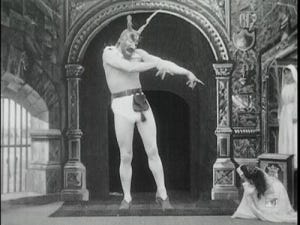The Devil and the Statue | Cinema Year One
A Flight from the Void
There is a man, standing, with a top hat and cane, gesticulating wildly. His appeals to the camera seem to grow more vociferous, but the viewer cannot hear him because the film is silent and its soundtrack consists of a jaunty, music hall staccato. Performing the extreme close-up par excellence, the …
Keep reading with a 7-day free trial
Subscribe to Cinema Year Zero to keep reading this post and get 7 days of free access to the full post archives.





